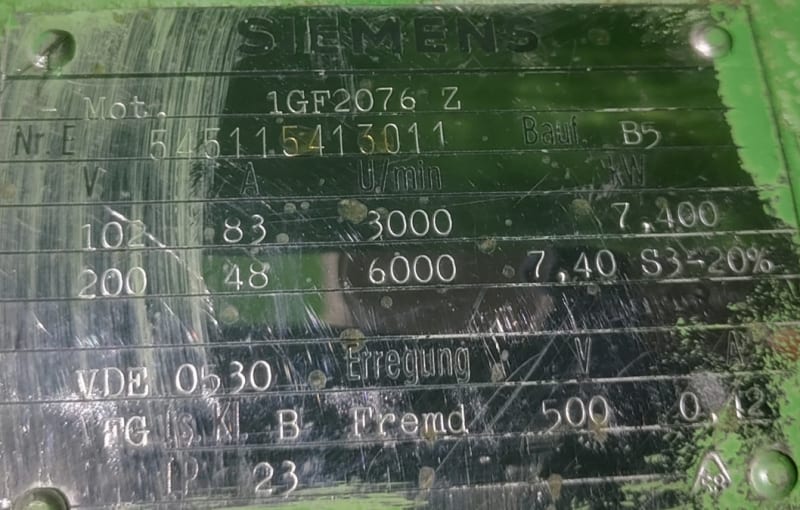back EMF is NOT 15-25 V. What I meant to say was that the DIFFERENCE between back EMF and applied voltage is in that range, pretty much independent of actual current loading.
An explanation of Back EMF and load current.
A typical AC induction motor runs just a little below synchronous speed.
For instance for a synchronous speed of 1800 RPM the motor may turn at 1760 or 1740 RPM at full load.
t no load, it will run much closer to synchronous speed.
DC motors;
An armature spinning in a magnetic field may be a motor or a generator.
An armature spinning in a magnetic field will generate a voltage proportional to the strength of the field and the rotational speed.
At a speed slightly above no-load speed, the machine is neither a motor nor a generator.
This is the speed at which the BACK EMF equals the applied voltage.
As a load, starting with friction and windage slows the machine slightly,
As the machine slows, the back EMF drops.
The difference between the supplied voltage and the back EMF is what drives the current through the armature circuit.
As the load is increased, the speed drops.
When the speed drops, the back EMF is less and the difference is greater.
The armature current is mostly limited by the armature circuit resistance.
The resistance of the armature circuit is very low, so a small difference between the applied voltage and the back EMF will drive a fairly large current through the armature circuit.
The difference between the back EMF and the applied voltage will be the applied voltage minus the product of the armature circuit resistance and the armature current.
Operation at double speed:
As the armature voltage is increased, the difference between the applied voltage and the back EMF becomes greater.
Thus the current increases.
Increased current means increased torque and the torque produced is now greater than the torque demanded by the load.
As a result, the motor accelerates, as the motor accelerates the back EMF increases and the current drops.
The motor will increase speed until the torque produced equals the torque demanded by the load.
If the load becomes too much, the motor will not reach a speed where the current drops to or below rated current.
Why is the current limited at higher speeds?
The way to limit current is to limit the load.
50% current implies 50% load.
But why the limit.
The commutator has a current/voltage limit.
Too much armature current and voltage and the commutator may flash over bar to bar.
I saw that once. We were commissioning a very large drag line excavator.
The main hoisting winch was driven by 3000 HP DC motors working together.
We were doing current limit/stall tests.
For these tests we installed jumpers across the brush-gear of the motors to simulate a stall, as a stall is almost a short circuit. (Very low resistance and no back EMF)
Or factory technician made a mistake and over-excited the generator fields.
The commutators all flashed over, or as it is sometimes called, the rank the comm.
It is impressive to see 4 3000 HP generators with rings of fire around their commutators.
That is probably why the current is limited at higher applied voltages.
I don't like to see back EMF or several other motor parameters given as absolutes.
Too may factors interact, and to state a load current, (Actual, not rated), speed or load as absolutes implies assumptions about other parameters that may not be accurate.
--------------------
Ohm's law
Not just a good idea;
It's the LAW!

